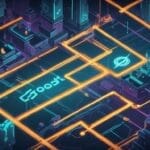In this post we will compile a list of the best tutorials on how to create 2D particles in Godot.
Content: How to create 2D particles in Godot
Creating 2D particles in Godot
What are Particles systems and how are they important for games
Particle systems are used in a variety of applications to create special effects in games and movies.
This has led to the development of Particle System (PS), which allow users to easily create particle systems.
A PS is software that performs common particle system tasks on your behalf and allows you to adjust parameter values to create a variety of By adjusting parameter values, different particle systems can be created.
Many PSs are inflexible, and if a customer needs features that are not supported by the PSI they are using, they are forced to find another PS that meets their needs or, more commonly, create their own particle system or PS from scratch.
All the main game engines usually integrate Particle Systems that can be easily integrated into the game without too much difficulties.
We are referencing a very interesting document that analyzes the importance of Particle systems for games and give some insights on their characteristics & features
How to create 2D particles in Godot 3.2 (A Beginner Guide to Particles Part 1) by jmbiv
This video will walk you through every single property available to you on a Particles2D node in Godot 3.2. I show you how to use all of these properties, and help you create a confetti cannon effect as a demonstration of how powerful Godot’s particle system is.
In the next video, we’ll create a portal door effect and a blood splatter effect from particles to further put the particle system in Godot to work.
Video Timestamps
0:00 Intro
0:27 CPUParticles2D vs. Particles2D
1:19 Particles2D Overview
2:16 Time
4:38 Drawing & Textures
5:17 Starting to Edit the Particles
5:46 Emission Shape
6:38 Flags
6:53 Direction & Gravity
7:25 Initial Velocity
9:03 Explosiveness (Bursts)
9:52 Angular Velocity
10:35 Orbital Velocity
11:10 Acceleration (Linear, Radial, Tangential)
12:23 Damping
14:19 Angle
14:52 Brief Intermission/Recap
15:10 Scale
15:42 Curves (Still Scale)
18:20 Color & Gradients
20:38 Hue Variation
22:08 Animation
22:22 Trail
23:57 Summary
24:20 Recap of How to Make Confetti
How to Create a Portal and Blood Splatter Effect in Godot 3.2 (Beginner’s Guide to Particles Part 2) by jmbiv
This video will show you how to create a portal effect like Minecraft’s nether door in Godot using particles. I also show you how to make a simple blood splatter effect.
This is part 2 in this series – make sure to watch part 1 to get an overview of how to use particles in Godot 3.2.
0:00 Intro
0:35 Blood Splatter
4:06 Portal Effect
How to create 2D particles in Godot – Particle Systems From BEGINNER To PRO by PlayWithFurcifer
Godot engine has really powerful particle systems that can add a lot to any game. In this video, we show you how to create various effects, some simple, some more advanced.
The video was made for #GoGodotJam 2!
You can download the code from GitHub:
https://github.com/PlayWithFurcifer
Tutorial Chapters Particle Systems From BEGINNER To PRO
0:00 Simple Flame
2:58 Simple Explosion
4:13 Retro Style Explosion
5:58 Implosion
8:09 Animations
8:56 Shaders
9:59 Particle Shaders
How to make Particles and Visual Effects in Godot by Plester
In this video I will walk you through the creation of some example effects inside the Godot Engine.
Tutorial Chapters How to make Particles and Visual Effects in Godot
00:00 Introduction and examples
00:32 Particles with animated textures
03:50 Offset textures for turbulence effect
06:24 Random texture from sprite sheet
07:55 Vortex effect with HDR colors
09:36 Using code to enhance sprites
Download all the textures and the example project: https://github.com/RPicster/Godot-particles.
if you want more tutorials on Godot , don´t forget to check our blog. If you have any question or doubt, don´t hesitate to leave your comment on this post.
Conclusion: How to create 2D particles in Godot
Godot Engine is a great game engine very powerful and very user friendly that as good approach on almost every subsystem of a game engine, and of course, the particles systems couldn´t be an exception, but rather a confirmation of a solid Unity replacement for game developer wanting to make games without using Unity or Unreal 4/5.
A game developer that wants to share its knowledge and experience with other game developers-





